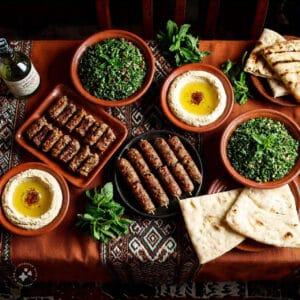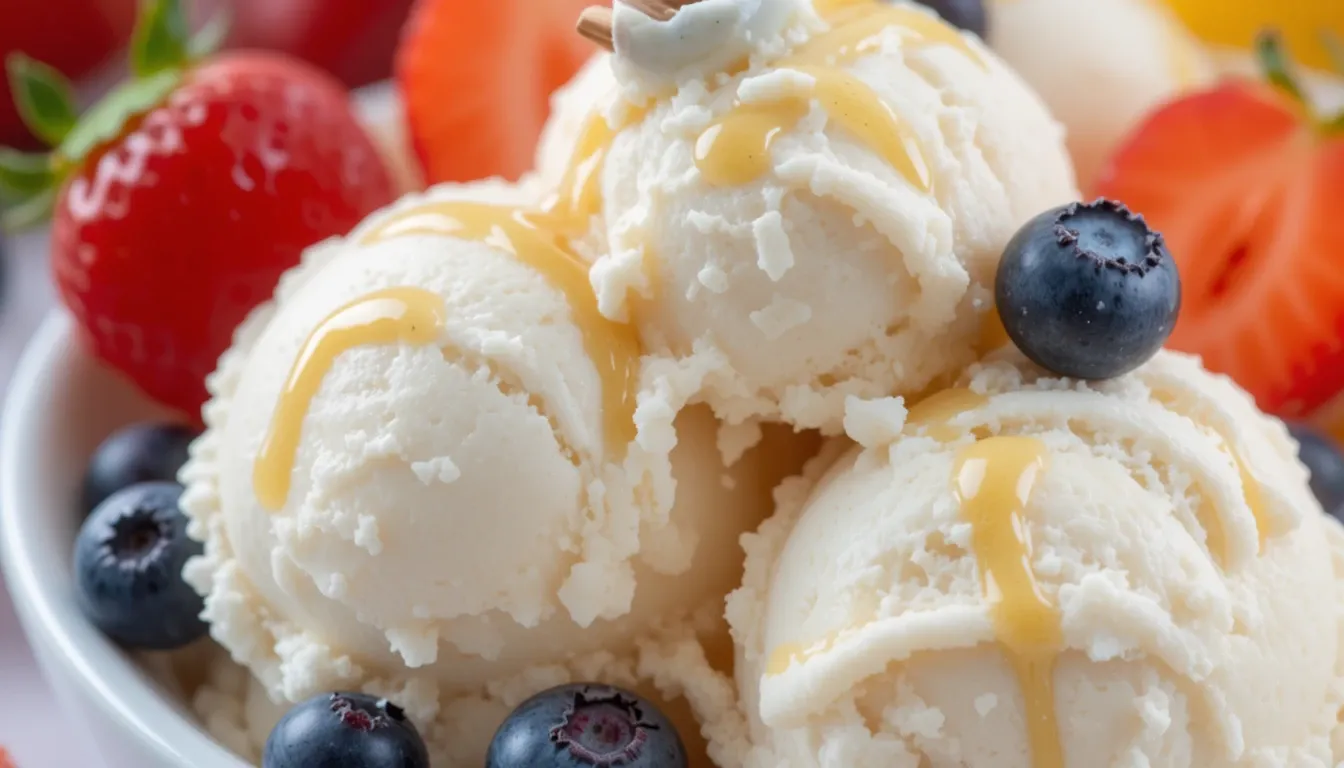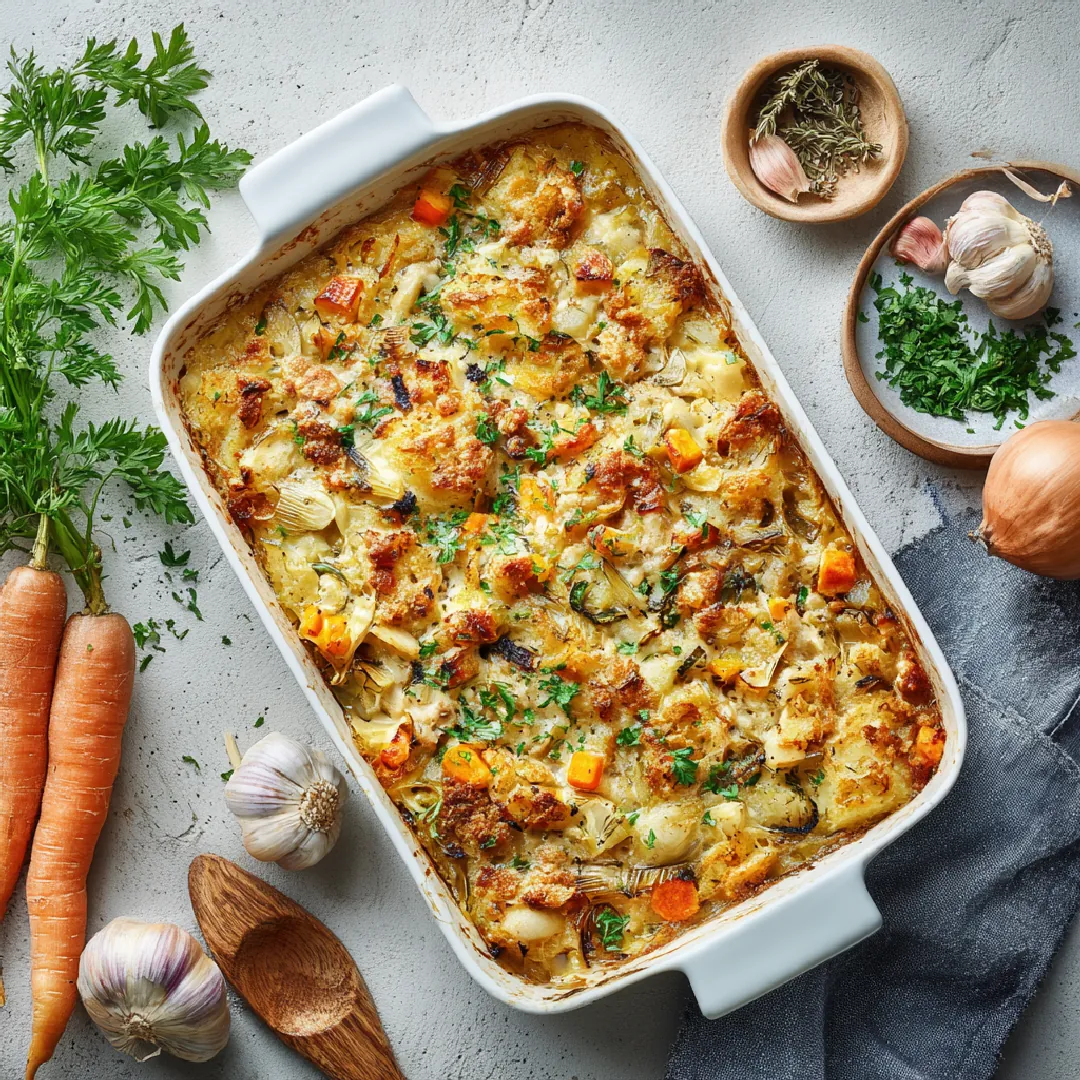Table of Contents
Lebanese food is renowned for being both delicious and healthy, but have you ever wondered, why is Lebanese food so healthy? This cuisine is a vibrant blend of fresh ingredients, balanced flavors, and nutrient-rich dishes rooted in Mediterranean traditions. From the generous use of olive oil and legumes to the focus on grilling and fresh herbs, every element contributes to its reputation as one of the healthiest diets in the world. Let’s dive into the secrets behind this flavorful and health-conscious cuisine.
Introduction to Lebanese Cuisine
Lebanese cuisine is a cornerstone of the Mediterranean diet, often celebrated for its health benefits and rich flavors. If you’ve ever sat down to a Lebanese meal, you’ve likely noticed the abundance of fresh salads, zesty dips, and perfectly seasoned meats. Every dish tells a story, reflecting Lebanon’s diverse culture and geography, from the fertile valleys to the shimmering coastlines.
But what makes Lebanese food stand out? It’s not just about taste—although, let’s admit, it’s pretty unforgettable. It’s about balance, simplicity, and a deep respect for ingredients. Lebanese cooking is proof that healthy food doesn’t have to be boring or complicated.
The Philosophy Behind Lebanese Food
Mediterranean Diet Influence
Lebanese cuisine shares its roots with the Mediterranean diet, which has long been associated with reduced risks of heart disease, diabetes, and obesity. It focuses on nutrient-rich foods like olive oil, fresh produce, whole grains, and lean proteins. Sound familiar? Yep, that’s the backbone of most Lebanese dishes!
Did you know that the Mediterranean diet was named one of the healthiest eating patterns by researchers at Harvard University? That’s no coincidence. Lebanese food takes these principles and makes them even better with its unique spices and preparation methods.
Emphasis on Fresh and Local Ingredients
One of the golden rules of Lebanese cooking is to use fresh, seasonal, and local ingredients. Think of it this way: why buy canned chickpeas when you can soak them fresh? Why choose imported when your local market offers a rainbow of ripe, flavorful veggies?
“Freshness is the secret ingredient you can’t fake,” as Lebanese chefs often say. This philosophy ensures that every bite is packed with nutrients and flavor—no preservatives, no additives, just pure goodness.
Key Ingredients in Lebanese Cuisine
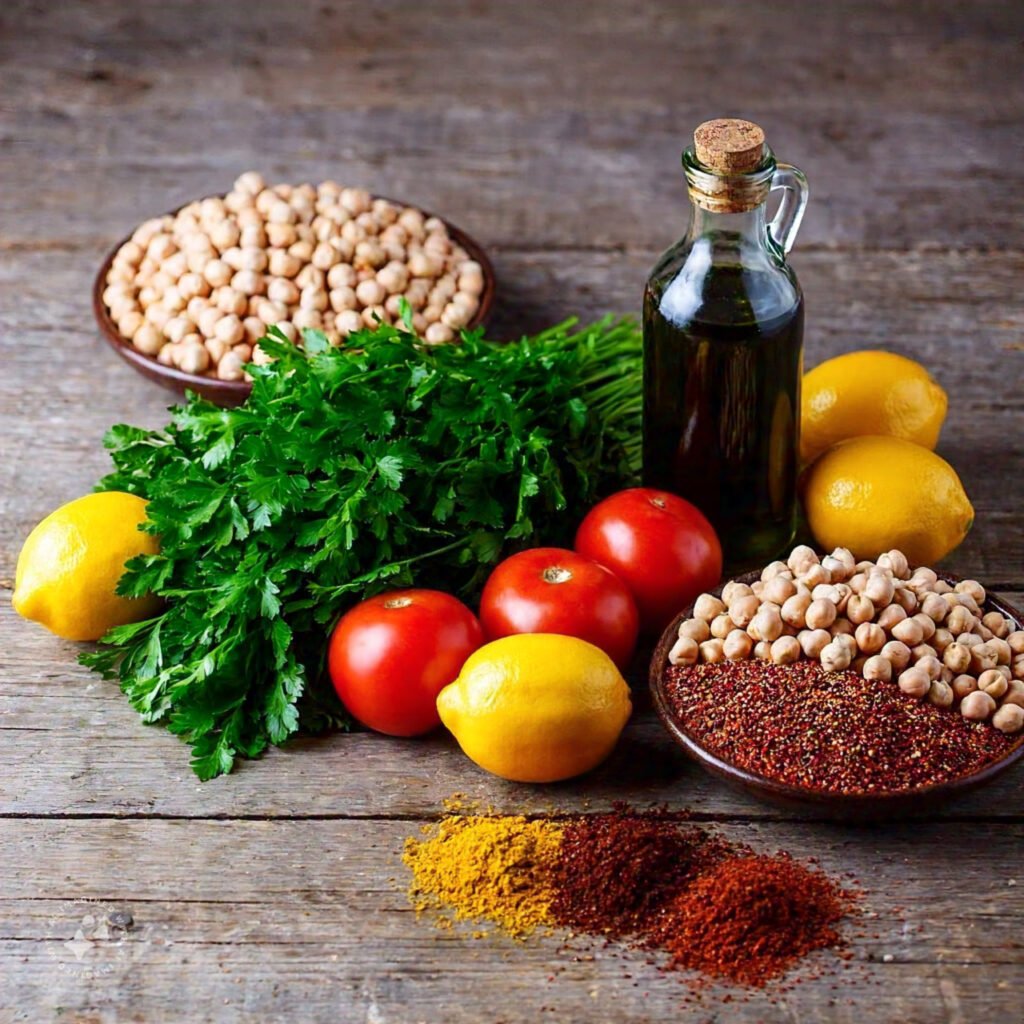
Olive Oil: The Heart of Lebanese Cooking
Let’s talk about olive oil. This liquid gold is used in everything, from salads to marinades to baking. Unlike butter or other saturated fats, olive oil is packed with heart-healthy monounsaturated fats and antioxidants. Plus, it gives Lebanese dishes that distinct earthy aroma we all love.
Block Quote:
“A meal without olive oil is like a day without sunshine.” – Lebanese Proverb
Abundance of Vegetables and Legumes
Ever noticed how Lebanese meals are loaded with vegetables? Whether it’s the parsley in tabbouleh or the eggplant in baba ghanoush, veggies play a starring role. Legumes like lentils and chickpeas are also staples, providing protein and fiber while keeping meals plant-forward.
This heavy reliance on plant-based ingredients makes Lebanese food ideal for vegans, vegetarians, or anyone looking to cut down on meat.
The Role of Herbs and Spices
Herbs like mint, parsley, and cilantro are more than garnishes in Lebanese cooking—they’re flavor powerhouses. Combined with spices like sumac, cinnamon, and allspice, these herbs add complexity without relying on salt or sugar.
Imagine a pinch of za’atar (a spice blend of thyme, sesame seeds, and sumac) sprinkled over warm bread. It’s a flavor explosion that’s healthy, too!
Traditional Lebanese Dishes and Their Health Benefits
Tabbouleh: A Nutritional Powerhouse
Tabbouleh isn’t just a salad; it’s a superfood in disguise. Made with bulgur, parsley, tomatoes, and a zesty lemon dressing, this dish is rich in vitamins C and K, fiber, and antioxidants.
Why does it matter? These nutrients promote heart health, improve digestion, and even give your skin that glow we all dream of. Tabbouleh is living proof that good food can do wonders for your body.
Hummus: Protein-Packed and Heart-Healthy
If you’ve never dipped warm pita into a bowl of hummus, you’re seriously missing out. Made with chickpeas, tahini, garlic, and olive oil, hummus is a protein-packed dip that’s as versatile as it is delicious.
It’s great for your heart, thanks to the fiber and unsaturated fats. Plus, it’s a fantastic option for anyone following a plant-based diet. And the best part? It’s ridiculously easy to make at home!
Fattoush: A Fresh and Filling Salad
Fattoush is the ultimate way to turn leftover bread into something magical. This crunchy, tangy salad features toasted pita, mixed greens, cucumbers, and radishes, all tossed in a sumac-spiked dressing.
The bread provides carbs for energy, while the veggies are loaded with vitamins and minerals. It’s a dish that’s as satisfying as it is healthy.
Kibbeh: Lean Protein in a Delicious Package
Kibbeh, often called the national dish of Lebanon, is a mixture of minced meat, bulgur, and spices. It’s baked, fried, or even served raw, depending on your preference.
While some might shy away from meat dishes, kibbeh uses lean cuts and blends them with grains, making it a balanced and protein-rich option.
Healthy Cooking Techniques in Lebanese Cuisine
Grilling Over Frying
Unlike many cuisines that rely heavily on frying, Lebanese cooking often favors grilling. Whether it’s skewers of marinated chicken or eggplant slices, grilling enhances flavors without adding unhealthy fats.
This method not only reduces calorie content but also creates that smoky, charred flavor that’s simply irresistible.
Steaming and Baking Methods
Many traditional dishes, like stuffed grape leaves (waraq enab), are steamed rather than boiled, preserving nutrients and textures. Baking is also a popular method, especially for pastries like spinach fatayer.
These techniques ensure that you get all the health benefits without sacrificing taste.
The Balance of Macronutrients in Lebanese Food
Low Saturated Fats and Cholesterol
One of the reasons Lebanese cuisine is so healthy is its minimal use of saturated fats. While many other cuisines rely on heavy creams or fatty oils, Lebanese cooking leans on heart-healthy olive oil. Even meat-based dishes like shawarma or lamb stews are typically prepared with lean cuts, keeping cholesterol levels in check.
For instance, grilled kebabs are seasoned with herbs and spices instead of fatty marinades. This way, you enjoy robust flavors without compromising your health. It’s a win-win!
Rich in Fiber and Plant-Based Proteins
Whether it’s lentils in mujadara or chickpeas in hummus, Lebanese food is naturally high in fiber. Fiber is essential for digestion and helps maintain stable blood sugar levels. Plus, legumes and grains are excellent sources of plant-based protein, making this cuisine a favorite among vegetarians and vegans.
What’s even better? The dishes are so hearty and satisfying, you don’t even notice you’re eating “healthy.”
The Role of Meze in a Healthy Diet
Portion Control and Variety
Ever been to a Lebanese feast? It’s hard to miss the spread of small plates, known as meze. This dining tradition encourages sharing, which naturally limits portion sizes and promotes a balanced intake of nutrients.
Think of meze as a colorful buffet of health: creamy labneh, tangy pickled vegetables, grilled halloumi, and crispy falafel. The variety ensures you’re getting a mix of proteins, healthy fats, and essential vitamins in one sitting.
Social and Emotional Benefits of Sharing Meze
Beyond physical health, Lebanese dining nurtures social connections. Sharing food creates a sense of community and belonging, which research shows can reduce stress and improve mental well-being.
Block Quote:
“Good food tastes even better when shared with good company.”
This holistic approach—nourishing both body and soul—is what makes Lebanese food so special.
Common Myths About Lebanese Food and Health
Misconception About High Carb Content
Some people shy away from Lebanese food, assuming it’s heavy on carbs because of dishes like pita bread or rice-based kibbeh. But here’s the thing: Lebanese cuisine balances these carbs with fiber-rich vegetables and lean proteins.
For example, mujaddara combines lentils and rice in perfect harmony, offering a balanced meal that keeps you full without spiking your blood sugar.
Myth of Excessive Use of Fats
Another common myth is that Lebanese food is oily or greasy. While olive oil is a staple, it’s used sparingly to enhance flavor rather than drench the dish. This is a far cry from the heavy-handed oil usage you might find in other cuisines.
Plus, the fats in olive oil are the good kind—monounsaturated fats that boost heart health and reduce inflammation.
How Lebanese Food Aligns With Modern Dietary Trends
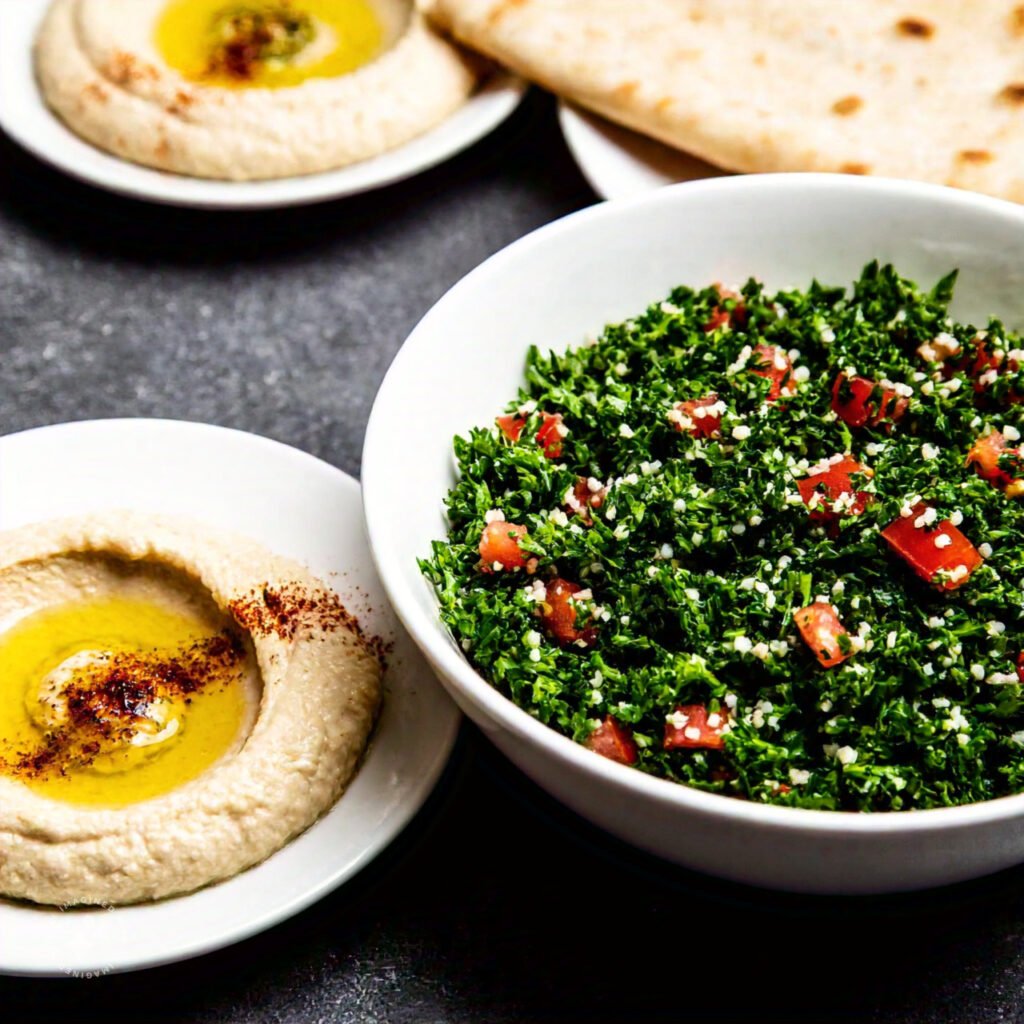
Gluten-Free and Vegan Options
In today’s world, where dietary restrictions are common, Lebanese cuisine shines as an inclusive choice. Gluten-free diners can enjoy dishes like grilled meats, rice-based mujaddara, and stuffed grape leaves. Vegans, on the other hand, can indulge in hummus, baba ghanoush, and falafel.
These naturally accommodating dishes mean everyone can find something to love on a Lebanese menu.
Low-Glycemic Index Choices
Many Lebanese foods have a low glycemic index, meaning they don’t cause rapid spikes in blood sugar. For instance, lentil-based dishes like mujaddara or soups are slow-digesting, providing sustained energy and keeping you fuller longer.
This makes Lebanese cuisine a great choice for people managing diabetes or simply looking to eat healthier.
Problems Associated With Adopting Lebanese Food Outside Lebanon
Availability of Authentic Ingredients
One of the biggest challenges for people trying to adopt Lebanese food abroad is finding authentic ingredients. While staples like olive oil and lentils are widely available, spices like sumac or za’atar and fresh pita bread might require specialty stores or online shopping.
Misinterpretation of Traditional Recipes
Another hurdle is the misrepresentation of Lebanese dishes in international restaurants. Sometimes, shortcuts like canned ingredients or heavy sauces are used, which take away from the authenticity and nutritional value of the food.
If you’re serious about eating healthy Lebanese food, it’s worth learning how to cook it at home. That way, you can ensure its authenticity and healthfulness.
Practical Tips for Making Lebanese Food a Part of Your Diet
Easy-to-Follow Recipes for Beginners
Getting started with Lebanese food at home is easier than you might think. Start simple with recipes like hummus, fattoush, or grilled chicken skewers. These dishes don’t require exotic tools or advanced skills, making them perfect for beginners.
For example, a basic hummus recipe only needs chickpeas, tahini, garlic, lemon juice, and olive oil. Blend them together, and voilà—you’ve got a delicious, protein-rich dip! Similarly, fattoush requires chopping fresh vegetables and whisking together a tangy dressing with sumac for that authentic Lebanese flavor.
Cooking Lebanese food at home not only allows you to control the ingredients but also ensures a truly healthy experience.
Shopping for Authentic Ingredients Worldwide
If you’re lucky, you might have a Middle Eastern grocery store nearby. These are treasure troves for essentials like za’atar, sumac, pomegranate molasses, and fresh pita bread.
Don’t have one close? Don’t worry! Online marketplaces now offer a wide variety of Lebanese ingredients. Many websites specialize in international foods and deliver directly to your door. Keep an eye out for organic and non-GMO versions to maintain the health benefits of these ingredients.
Pro tip: Buy in bulk when possible. Spices like za’atar and sumac last a long time when stored properly, so you’ll always have them on hand for your next culinary adventure.
FAQs
What makes Lebanese food a healthy choice?
Lebanese food relies on fresh, natural ingredients like olive oil, vegetables, and lean proteins. It avoids processed foods and uses healthy cooking methods like grilling and steaming.
Can Lebanese food fit into a vegan or vegetarian diet?
Absolutely! Many Lebanese dishes, such as hummus, falafel, and baba ghanoush, are naturally vegan or vegetarian, making this cuisine highly adaptable.
Is Lebanese food suitable for people with gluten intolerance?
Yes! Many Lebanese dishes, like mujaddara and stuffed grape leaves, are naturally gluten-free. You can also find gluten-free options for pita bread to complete the experience.
Are the spices used in Lebanese food healthy?
Definitely. Spices like sumac, za’atar, and cinnamon not only add incredible flavor but also offer health benefits like reducing inflammation and boosting antioxidants.
How can I make Lebanese food healthier at home?
Use fresh, high-quality ingredients, avoid excessive salt, and rely on traditional cooking techniques like grilling or baking. Making dishes from scratch ensures better control over the nutritional content.
What are the key dishes to try for a beginner to Lebanese food?
Start with tabbouleh, hummus, and fattoush—simple yet delicious dishes that capture the essence of Lebanese cuisine.
Conclusion: The Timeless Healthiness of Lebanese Cuisine
Lebanese food is much more than a meal—it’s a lifestyle. Rooted in the Mediterranean diet, it celebrates fresh, wholesome ingredients, balanced nutrition, and mindful eating. From heart-healthy olive oil to fiber-rich legumes and antioxidant-packed herbs, every element of Lebanese cooking contributes to its health benefits.
What’s truly special about Lebanese cuisine is how it nourishes both the body and the soul. Sharing a spread of meze, savoring a bowl of tabbouleh, or indulging in a bite of perfectly grilled kibbeh creates moments of connection, joy, and well-being.
So, the next time you ask yourself, “Why is Lebanese food so healthy?” remember this: it’s not just the ingredients or the techniques—it’s the love and tradition behind every dish. 💚
You might also like What Is the Difference Between Kibbeh and Falafel?

